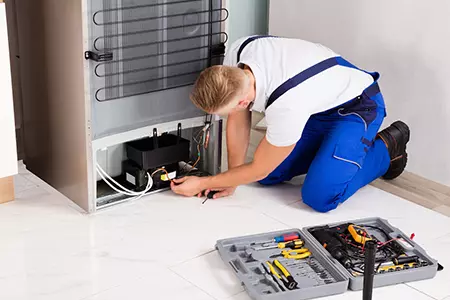
Image Source: Google
Refrigerators are essential appliances in our daily lives, keeping our food fresh and drinks cold. However, like any appliance, they can encounter problems from time to time. Instead of rushing to call a repair technician, many common refrigerator issues can be fixed with some basic troubleshooting and DIY repair techniques. If you need more information about refrigerator appliance repair, you may visit Sydney Appliance Repair.
In this guide, we will walk you through the most common refrigerator problems and how you can troubleshoot and fix them yourself.
Common Refrigerator Issues
1. Refrigerator Not Cooling
- Check the temperature settings to ensure they are set correctly.
- Inspect the condenser coils for dust and debris and clean them if necessary.
- Make sure the evaporator fan is running properly.
- Verify that the door seals are tight and free of any obstructions.
2. Excessive Frost Build-Up in the Freezer
- Check the defrost timer, heater, and thermostat for any malfunctions.
- Ensure the freezer door is closing properly and the seal is intact.
- Defrost the freezer manually to remove excess ice buildup.
3. Water Leaking Inside the Refrigerator
- Inspect the drain line for clogs and clean if necessary.
- Check the drip pan underneath the refrigerator for any cracks or leaks.
- Ensure the refrigerator is level to prevent water from leaking out.
DIY Repair Steps
1. Gather the Necessary Tools
- Multimeter
- Screwdrivers (Phillips and flathead)
- Flashlight
- Bucket or towels for cleaning
2. Safety Precautions
- Unplug the refrigerator before starting any repair work.
- Avoid working on wet surfaces to prevent electrical shocks.
- Use gloves and safety goggles when handling sharp objects or chemicals.
3. Troubleshooting and Repair
Follow these general steps when troubleshooting common refrigerator issues:
- Identify the problem by observing the symptoms and conducting basic tests.
- Refer to the appliance manual for troubleshooting tips and diagrams.
- Inspect the components such as the thermostat, compressor, condenser coils, and fan for any visible damage or malfunctions.
- Replace faulty parts with new ones following the manufacturer's instructions.
- Test the refrigerator after repairs to ensure the issue has been resolved.
Final Tips and Recommendations
1. Regular Maintenance
Prevent future refrigerator issues by following these maintenance tips:
- Clean the condenser coils every 6 months to improve cooling efficiency.
- Check and replace the door seals if they are worn out or loose.
- Defrost the freezer regularly to prevent ice buildup.
2. Know When to Call a Professional
While many refrigerator problems can be fixed with DIY repair, there are instances when it is best to call a professional technician, such as:
- Refrigerant leaks
- Compressor issues
- Electrical problems
3. Resources and Support
If you encounter difficulties during the repair process, don't hesitate to seek help from the following sources:
- Online forums and community boards
- Manufacturer helplines and customer support
- Local appliance repair shops